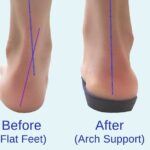Explore our comprehensive guide on shoe inserts for plantar fasciitis. Discover expert advice, FAQs, and essential information to alleviate discomfort and promote foot health.
Plantar fasciitis can be a painful condition, making it difficult to walk and enjoy daily activities. Fortunately, shoe inserts can provide much-needed relief and support. In this ultimate guide, we will delve into everything you need to know about shoe inserts for plantar fasciitis. From understanding the condition to choosing the right inserts and answering frequently asked questions, we’ve got you covered.
Table of Contents
Understanding Plantar Fasciitis
What is Plantar Fasciitis?
Plantar fasciitis is a common condition that affects the foot, specifically the plantar fascia, a thick band of tissue that runs across the bottom of your foot, connecting your heel bone to your toes. This condition is characterized by pain in the heel area, and it’s most often felt during the first steps in the morning or after long periods of rest.
Causes of Plantar Fasciitis
The plantar fascia is designed to support the arch of your foot and absorb shocks when you walk. However, tension and stress on this tissue can cause small tears, leading to inflammation and pain. The exact cause of plantar fasciitis isn’t always clear, but it’s often linked to:
- Repetitive Strain: Activities that place a lot of stress on your heel and attached tissue, like running, can lead to this condition.
- Foot Mechanics: Flat feet, a high arch, or abnormal walking patterns can put extra stress on the plantar fascia.
- Age: It’s more common in people between 40 and 60 years old.
- Obesity: Extra weight can stress the plantar fascia.
- Occupational Factors: Jobs that require long hours of walking or standing on hard surfaces can contribute to the onset of plantar fasciitis.
Risk Factors
Several factors can increase your risk of developing plantar fasciitis, including:
- Age: Plantar fasciitis is most common between the ages of 40 and 60.
- Certain Types of Exercise: Activities that place a lot of stress on your heel and attached tissue — such as long-distance running, ballet dancing, and aerobic dance — can contribute to an earlier onset of plantar fasciitis.
- Foot Mechanics: Flat feet, a high arch, or even an abnormal pattern of walking can affect the way weight is distributed when you’re standing and put added stress on the plantar fascia.
- Obesity: Excess pounds put extra stress on your plantar fascia.
- Occupations That Keep You on Your Feet: Factory workers, teachers, and others who spend most of their work hours walking or standing on hard surfaces can damage their plantar fascia.
Symptoms
The primary symptom is pain and stiffness in the bottom of the heel. This pain can be dull or sharp. The foot sole may ache or burn. The pain is usually worse:
- In the morning when you take your first steps
- After standing or sitting for a while
- When climbing stairs
- After intense activity
The pain might develop slowly over time, or suddenly after intense activity.
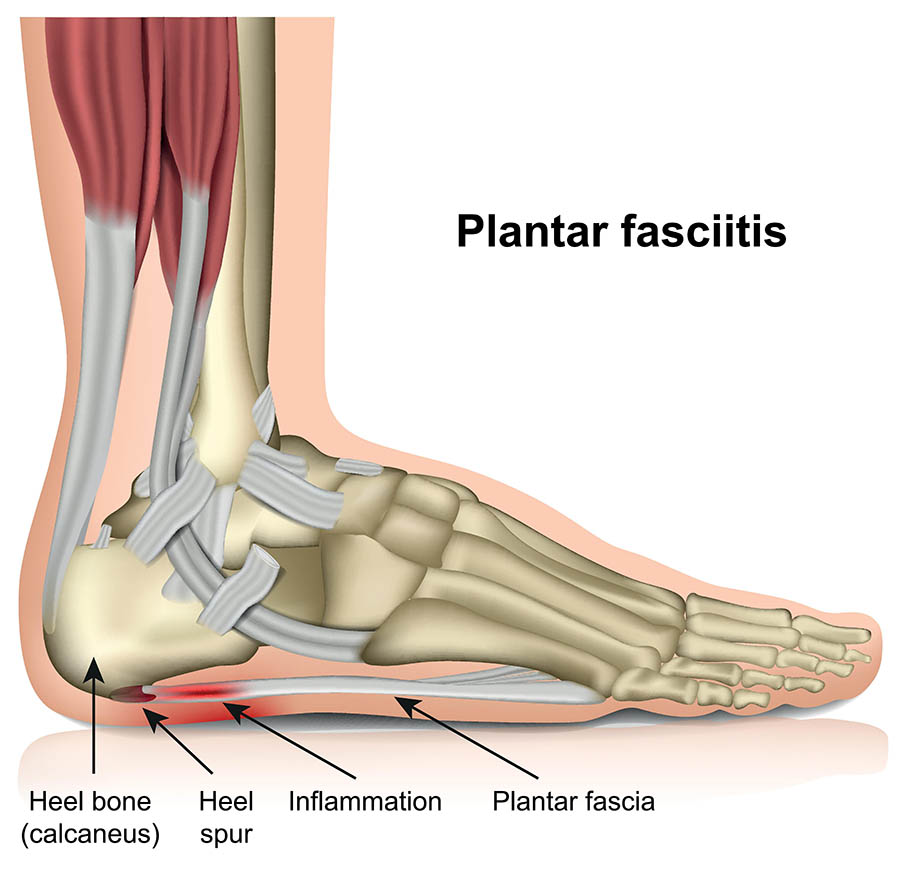
Diagnosis and Treatment
Diagnosis is usually based on a physical examination and review of your medical history. Your doctor may check for tender areas in your foot.
Treatment for plantar fasciitis usually involves:
- Rest and Ice: Resting the foot and applying ice can reduce inflammation.
- Pain Relief: Over-the-counter pain relievers like ibuprofen can help.
- Stretching Exercises: Stretching the plantar fascia and Achilles tendon can alleviate pain.
- Orthotics: Custom-fitted arch supports can help distribute foot pressure more evenly.
- Physical Therapy: A physical therapist can instruct on exercises to strengthen the lower leg muscles.
- Night Splints: Wearing a splint at night can stretch your calf and the arch of your foot.
Most people recover from plantar fasciitis with these non-surgical treatments. However, in persistent cases, more invasive treatments like steroid injections or surgery may be considered.
Types of Shoe Inserts
Shoe inserts, also known as orthotics, are devices placed inside shoes to provide support, alleviate pain, and improve the function of the foot. They come in various types, each designed to address specific foot issues, including those associated with plantar fasciitis. Here’s an overview of the different types of shoe inserts:
1. Arch Supports
- Purpose: Specifically designed to support the foot’s natural arch.
- Benefits: Ideal for people with flat feet or high arches. They help distribute pressure more evenly across the foot and can alleviate pain caused by conditions like plantar fasciitis.
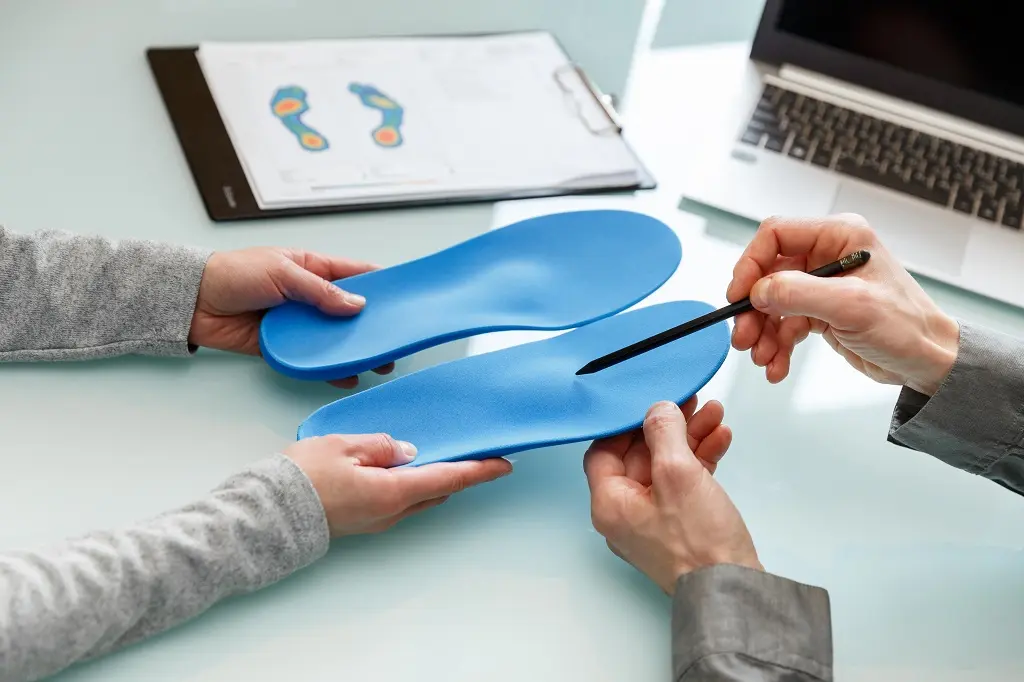
2. Insoles
- Material: Made from gel, foam, or plastic.
- Purpose: Provide additional cushioning and support.
- Benefits: They can help with general foot discomfort, fatigue, and provide extra shock absorption.
3. Heel Liners (Heel Cups or Heel Pads)
- Purpose: Designed to cushion the heel and provide relief from heel pain.
- Benefits: Beneficial for plantar fasciitis, heel spurs, and heel pain. They reduce the impact on the heel and can alleviate pain.
4. Metatarsal Pads
- Location: Placed in the shoe under the ball of the foot.
- Purpose: Relieve pressure from the metatarsal bones.
- Benefits: Ideal for conditions like metatarsalgia and can help with forefoot pain.
5. Custom Orthotics
- Customization: Tailored specifically to your foot’s contours.
- Purpose: Address specific foot issues based on a foot scan or mold taken by a professional.
- Benefits: They provide precise support and are effective for a wide range of foot problems, including plantar fasciitis, abnormal walking patterns, and severe foot pain.
6. 3/4 Length Inserts
- Size: Extend from the heel to the ball of the foot.
- Purpose: Provide arch and metatarsal support without crowding the toe area.
- Benefits: Suitable for dress shoes or tighter-fitting footwear.
7. Full-Length Inserts
- Size: Run the entire length of the shoe.
- Purpose: Offer complete foot support.
- Benefits: Useful for athletic shoes or when full-foot support is needed.
8. Gel Inserts
- Material: Made of a gel substance.
- Purpose: Provide cushioning and shock absorption.
- Benefits: Ideal for athletes or individuals who engage in high-impact activities.
9. Cushioned Insoles
- Material: Made of soft materials like foam.
- Purpose: Offer additional comfort and cushioning.
- Benefits: Good for people who stand for long periods or have general foot fatigue.
When choosing shoe inserts, it’s crucial to consider your specific foot needs, the type of shoes you’ll be using them in, and the activities you engage in. For those with specific foot conditions like plantar fasciitis, consulting with a podiatrist or foot specialist is recommended to determine the most suitable type of insert. Proper fitting shoe inserts can make a significant difference in comfort, pain relief, and foot health.
Selecting the Right Shoe Inserts
Selecting the right shoe inserts is crucial for ensuring comfort, proper foot support, and alleviating pain, especially for conditions like plantar fasciitis. Here’s a guide to help you make the best choice:
Understanding Your Foot Type and Needs
- Analyze Your Arch Type: Determine if you have a low, high, or neutral arch. This will influence the type of support you need.
- Identify the Source of Discomfort: Consider where you feel pain or discomfort in your feet. Different inserts target different areas – heel, arch, or ball of the foot.
Types of Shoe Inserts
- Cushioned Insoles: Good for general comfort and shock absorption.
- Arch Supports: Beneficial for flat feet or high arches.
- Heel Cups or Pads: Specifically target heel pain and are useful for plantar fasciitis.
- Metatarsal Pads: Focus on the ball of the foot, suitable for metatarsalgia.
- Custom Orthotics: Prescribed by a professional, tailored to your specific foot issues.
Factors to Consider
- Material: Inserts come in gel, foam, plastic, or a combination. Foam offers cushioning, gel provides shock absorption, and plastic offers firm support.
- Shoe Compatibility: Ensure the insert fits well in your everyday shoes. Some are designed for wider shoes like sneakers, while others fit better in dress shoes.
- Activity Level: Consider your daily activities. Athletes might need more shock absorption, while office workers might prioritize comfort and arch support.
- Durability: Higher quality materials tend to last longer but might be more expensive.
- Cost: Over-the-counter inserts are less expensive than custom orthotics. Decide based on your budget and the severity of your foot issues.
Trying Out Inserts
- Test for Comfort: Walk around with the inserts in your shoes to ensure they feel comfortable and provide the support you need.
- Gradual Adjustment: It may take time to adjust to new inserts. Start by wearing them for a few hours a day.
- Check Alignment: Make sure the inserts align correctly with your arch and heel for optimal support.
Professional Consultation
- Seek Advice: If you have persistent foot pain or specific conditions like plantar fasciitis, consult a podiatrist.
- Custom Orthotics: These are an option if over-the-counter inserts don’t provide relief. They are tailored to your feet, offering specific support and alignment.
Maintenance
- Regular Replacement: Replace your inserts when they start to wear out. This is typically every 6-12 months, depending on usage.
- Keep Them Clean: Follow the manufacturer’s instructions for cleaning to maintain hygiene and longevity.
Top 3 Arch Support For Plantar Fasciitis
Atlas Arch Support
Features
- Heat Moldable: One of the standout features of the Atlas Arch Support is its heat moldable capability. This allows the insoles to be custom-shaped to the unique contours of your feet, ensuring a perfect fit.
- Durable Construction: These insoles are made with high-quality materials that are built to last, providing a sturdy base for arch support.
- Versatile Design: The design is structured to support different arch types, catering to a broad range of foot shapes and sizes.
- Balanced Support: The Atlas Arch Supports offer a balanced blend of firm support and cushioning, designed to provide comfort while stabilizing the foot.
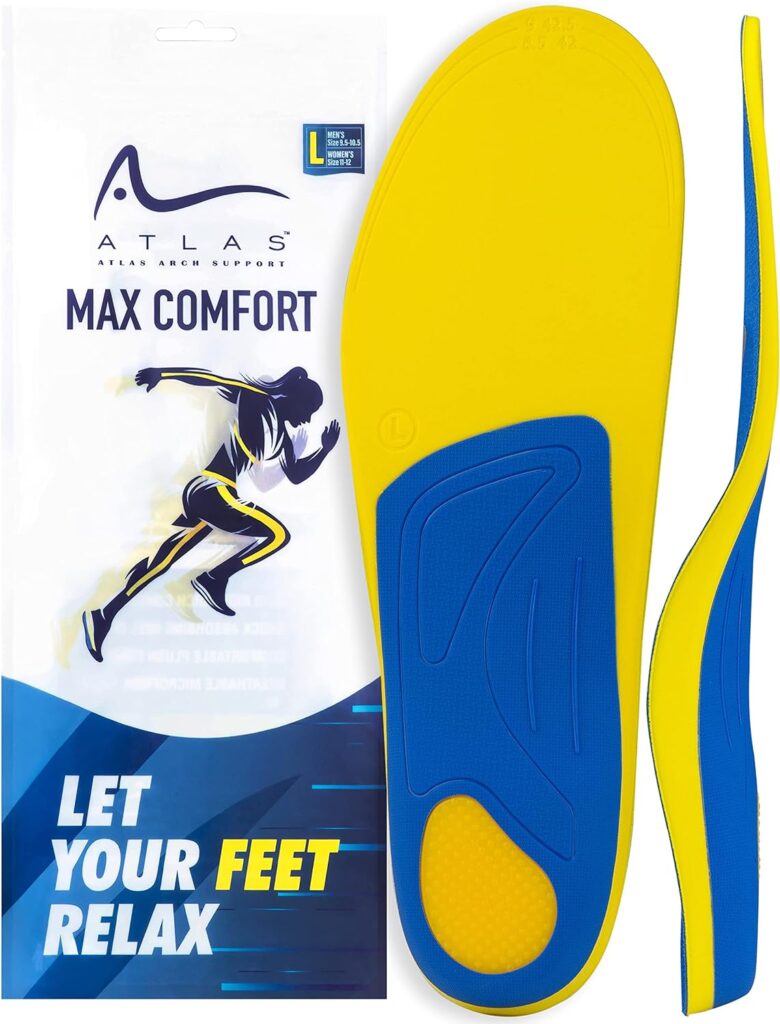
Benefits
- Customized Fit: The heat moldable feature provides a custom fit, which is essential for targeted support and effective relief from foot pain.
- Enhanced Comfort: By molding to the specific shape of your foot, these insoles can significantly enhance the comfort of your shoes, making them ideal for extended wear.
- Pain Relief: They are particularly effective in alleviating pain caused by plantar fasciitis, as they distribute foot pressure evenly and reduce the strain on the plantar fascia.
- Improved Foot Alignment: By providing proper arch support, these insoles can help improve overall foot alignment, which is beneficial for long-term foot health.
Suitability
- Suitable for Various Foot Types: Given their customizable nature, the Atlas Arch Supports are suitable for individuals with different arch types, including flat feet, neutral arches, or high arches.
- Versatile for Various Shoe Types: These insoles can be used in a wide range of footwear, from athletic shoes to casual and work shoes.
- Ideal for Active Lifestyles: They are a great choice for people who are on their feet a lot or engage in activities that put stress on the feet.
- Recommended for Foot Conditions: Besides plantar fasciitis, they are also suitable for individuals suffering from other foot conditions that require enhanced arch support.
In summary, the Atlas Arch Support insoles offer a unique combination of customization, comfort, and support, making them a versatile choice for those seeking relief from plantar fasciitis and other foot-related discomforts. Their heat moldable feature ensures a personalized fit, catering to a wide range of foot types and suitable for various lifestyles and footwear.
Powerstep Pinnacle Orthotic Insoles

Features
- Structured Support: The insoles provide a firm but flexible arch support, catering to a balance between support and comfort.
- Dual-Layer Cushioning: They are designed with a double-layer foam cushioning for enhanced comfort during prolonged wear.
- Deep Heel Cradle: The deep heel cradle offers increased stability and support, particularly in the heel area.
- Anti-Microbial Top Fabric: This feature helps reduce heat and friction, maintaining a cooler, drier shoe environment.
- EVA Foam Base: The durable EVA foam base provides long-lasting support and structure to the insole.
Benefits
- Relief from Foot Pain: Especially beneficial for those suffering from plantar fasciitis, these insoles help alleviate heel and arch pain.
- Improved Comfort: The dual-layer cushioning ensures a comfortable walking experience, even during extended periods of wear.
- Enhanced Stability: The deep heel cradle enhances stability, reducing the risk of overpronation which can exacerbate foot pain.
- Prevents Foot Conditions: Regular use can help in preventing further foot conditions related to poor alignment, such as bunions and hammertoes.
- Hygienic Solution: The anti-microbial top fabric keeps the feet cool and dry, reducing the likelihood of foot odor.
Suitability
- Versatile Fit: These insoles are suitable for a variety of shoe types, including athletic, casual, and dress shoes.
- Ideal for Different Arch Types: While they provide firm support, they are flexible enough to accommodate most arch types.
- Beneficial for Active Individuals: Particularly suitable for people who spend a lot of time on their feet or engage in activities that put stress on the feet.
- Recommended for Various Foot Conditions: Besides plantar fasciitis, they are also effective for conditions like overpronation, heel spurs, and knee pain.
Superfeet GREEN Insoles
Features
- High-Density Foam Layer: Provides long-lasting comfort and support, crucial for extended periods of use.
- Deep Heel Cup: The deep heel cup design helps with natural shock absorption and adds stability.
- Stabilizer Cap: Acts as the base of the insole, supporting the rearfoot and providing structure and stability to the foam layer.
- Organic Odor-Control Coating: Eliminates odor-causing bacteria, ensuring a fresher in-shoe environment.
- High Arch Design: Particularly suitable for those with a high arch, providing extra support in this area.
Benefits
- Alleviates Foot Pain: Excellent for reducing foot pain associated with plantar fasciitis and other conditions.
- Enhances Comfort: The high-density foam layer ensures comfort throughout the day, even during prolonged standing or walking.
- Improves Stability: The deep heel cup and stabilizer cap contribute to better foot alignment and stability, reducing the risk of ankle rolls and enhancing overall gait.
- Promotes Healthy Foot Environment: The organic odor-control coating helps maintain a clean and odor-free foot environment.
- Supports High Arches: Specifically beneficial for individuals with high arches, providing the necessary support to reduce strain.
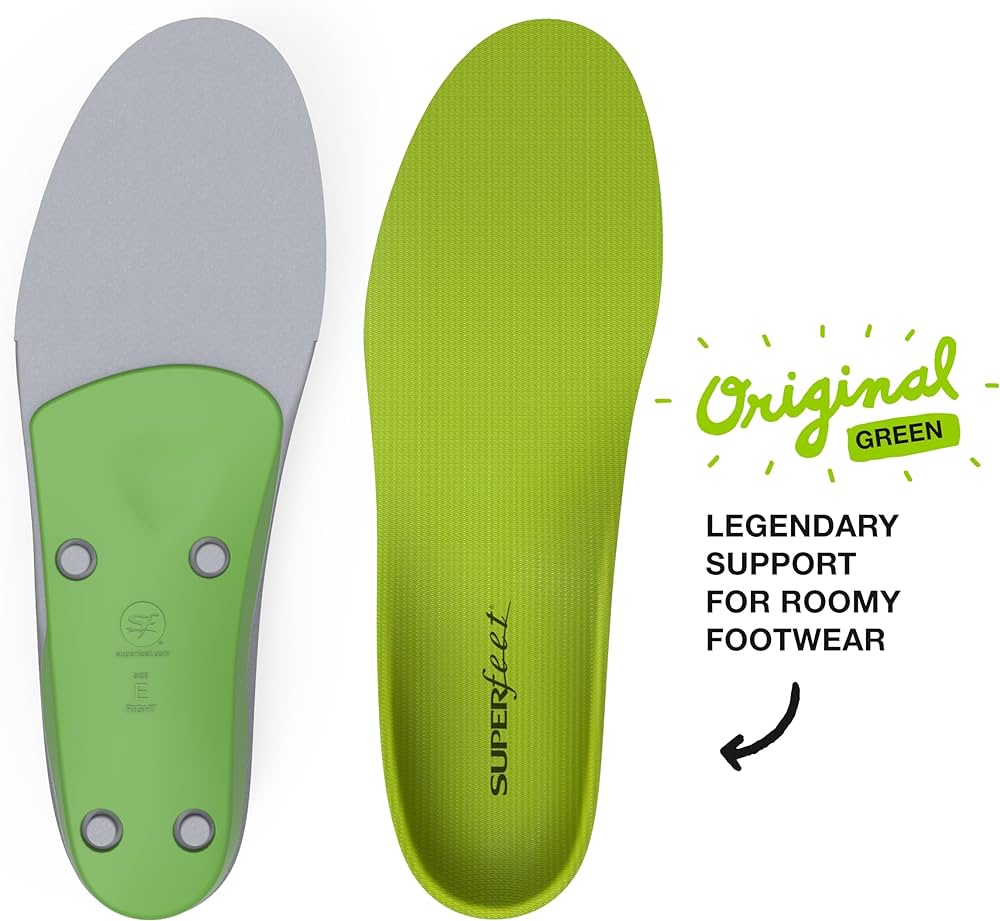
Suitability
- Compatible with Various Shoe Types: Suitable for a wide range of footwear, including athletic, hiking, and casual shoes.
- Ideal for Active Lifestyles: Great for people who are on their feet a lot or participate in activities that require foot stability and support.
- Recommended for High Arch Individuals: The design caters specifically to those with higher arches, though they can be comfortable for medium arches as well.
- Useful for Multiple Foot Conditions: While they are particularly helpful for plantar fasciitis, they also provide relief for conditions like heel pain, arch discomfort, and overpronation.
Benefits of Using Shoe Inserts
Using shoe inserts offers a multitude of benefits, especially for individuals who experience foot discomfort or have specific foot conditions like plantar fasciitis. Here are the key advantages of using shoe inserts:
1. Alleviates Foot Pain
- Specific Relief: Inserts can target and alleviate pain in specific areas of the foot, such as the heel, arch, or ball.
- Condition Management: They are particularly beneficial for managing symptoms of conditions like plantar fasciitis, flat feet, and heel spurs.
2. Enhances Comfort
- Cushioning: Inserts provide additional cushioning, reducing the impact on the feet during activities like walking or running.
- Improved Foot Feel: The extra cushioning can make shoes feel more comfortable, especially for individuals who spend long hours on their feet.
3. Improves Foot and Ankle Alignment
- Corrects Pronation/Supination: Inserts help in correcting overpronation or supination, leading to better alignment of the foot and ankle.
- Stability: They offer stability to the foot, which can improve overall balance and reduce the risk of ankle rolling or injuries.
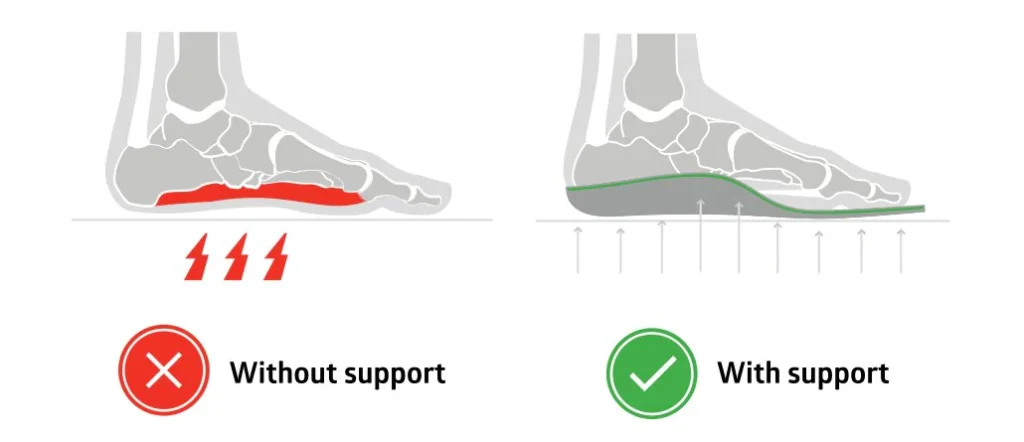
4. Reduces Stress on Joints
- Shock Absorption: By providing cushioning, shoe inserts can absorb shock, reducing stress on joints like the ankles, knees, and hips.
- Long-Term Joint Health: This reduction in joint stress can be beneficial for long-term joint health and can alleviate joint pain related to foot imbalances.
5. Prevents Foot Conditions
- Proactive Care: Regular use of shoe inserts can prevent the development of new foot conditions, especially in individuals prone to foot problems.
- Supportive Care: For those already suffering from foot issues, inserts can prevent the conditions from worsening.
6. Increases Athletic Performance
- Enhanced Support: Athletes may find that inserts provide the additional support needed during high-impact activities.
- Improved Endurance: The extra cushioning and support can improve endurance and performance by reducing foot fatigue.
7. Improves Overall Comfort and Posture
- Better Posture: Proper foot alignment can lead to better overall posture, reducing strain on the lower back.
- Daily Comfort: Inserts make daily activities more comfortable, especially for those who are on their feet for extended periods.
8. Customizable to Specific Needs
- Tailored Fit: Shoe inserts come in various types and can be customized to fit individual foot shapes and needs.
- Versatile Use: They can be used in different types of shoes, from athletic to formal wear, providing flexibility in use.
Using shoe inserts is a simple yet effective way to improve foot health and comfort. Whether for pain relief, enhanced athletic performance, or preventive care, the benefits of shoe inserts make them a valuable addition to daily foot care for many individuals.
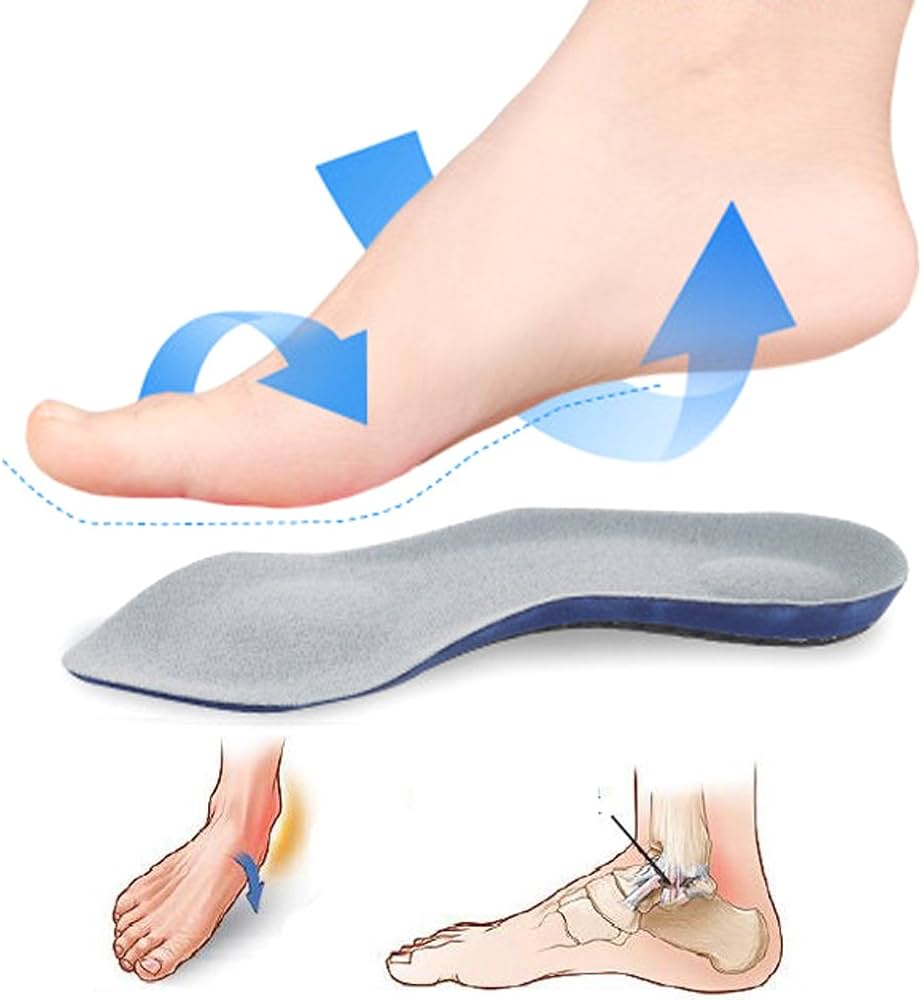
WHERE TO BUY
